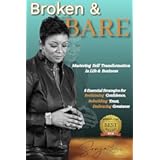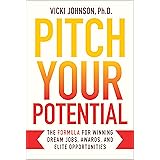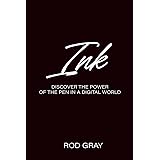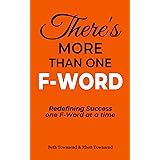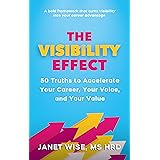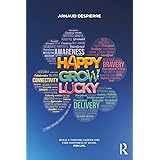In the competitive landscape of job interviews, certain questions are almost universally posed. It is estimated that a significant majority of professional interviews, often exceeding 70%, will include a query designed to assess self-awareness and potential growth areas. Among these, the question “What is your weakness?” frequently causes apprehension among candidates. As effectively discussed by Shyam sir in the accompanying video, the approach to this question is not about candidly listing every personal flaw, but rather about strategic presentation.
The challenge inherent in responding to this question is often underestimated. A balance must be struck between authenticity and diplomacy. A common misconception involves the belief that complete transparency, akin to revealing one’s “problems” directly, will be rewarded. However, a pragmatic understanding of the interviewer’s perspective is crucial; no organization actively seeks to recruit individuals who highlight unaddressed deficiencies that could impede performance. Thus, a nuanced and prepared response becomes invaluable for those aiming to navigate such critical discussions effectively.
The Underlying Intent: Why Interviewers Ask About Weaknesses
The inquiry into a candidate’s weaknesses is far more than a simple test of honesty; it is a sophisticated behavioral interview question designed to reveal several key competencies. Primarily, it serves to gauge a candidate’s level of self-awareness. An individual’s capacity to recognize personal limitations is often viewed as a prerequisite for professional growth and continuous improvement. Without an understanding of one’s shortcomings, the prospect of overcoming them is considerably diminished.
Furthermore, this question is utilized to assess a candidate’s problem-solving skills and growth mindset. Interviewers are not necessarily seeking a flawless candidate, as such an individual is often considered a myth. Instead, insight is sought into how challenges are approached and how past obstacles have been managed. The focus is placed on the journey of improvement, demonstrating a proactive stance towards personal and professional development. Additionally, a well-articulated response can subtly convey attributes such as humility, resilience, and a commitment to learning, all of which are highly valued in any organizational setting.
Avoiding Common Pitfalls When Discussing Weaknesses
When preparing to answer, candidates are often advised against several stereotypical or counterproductive responses. As implicitly suggested in the video, directly stating a weakness such as “laziness,” “short-temperedness,” or “impatience” is generally ill-advised. Such responses are perceived as fundamental character flaws rather than areas amenable to professional development. Similarly, offering a weakness that is a critical requirement for the role being pursued—e.g., poor attention to detail for an accounting position—is a strategic misstep that can quickly disqualify a candidate.
Another common pitfall involves the use of “disguised strengths.” Examples include claims of “perfectionism” or “working too hard.” While these might seem clever, they are frequently recognized by experienced interviewers as evasive and lacking genuine self-reflection. True weaknesses, when presented constructively, should demonstrate a genuine challenge that has been, or is being, actively addressed. Therefore, authenticity, coupled with a forward-looking perspective, is paramount.
Crafting a Strategic Response: The Overcoming Weakness Framework
The effective approach, as elucidated in Shyam sir’s guidance, involves transforming a potential negative into a narrative of personal growth. This strategic framework typically comprises three core components:
- **Identification of a Past Weakness:** A specific area of deficiency that was recognized.
- **Demonstration of Remedial Action:** Concrete steps taken to address and improve upon this weakness.
- **Expression of Ongoing Progress:** Acknowledgment that while improvement has occurred, continued effort and development are still being pursued.
This structured method, often aligned with elements of the STAR method (Situation, Task, Action, Result), allows for a comprehensive and positive presentation. It showcases self-awareness, initiative, and a commitment to professional development, thereby mitigating the negative impact of admitting a weakness and instead highlighting a capacity for growth.
Concrete Examples for Answering the “Weakness” Question
Let us delve into specific examples, elaborating on the concise illustrations provided in the video, to demonstrate how this framework is applied in practical, real-world scenarios.
1. Enhancing Communication Skills (Specifically English Proficiency)
Original Weakness: Previously, a notable challenge was poor English communication skills, hindering sentence construction and overall verbal expression.
Strategic Response Example:
“Sir, a few years ago, my English language proficiency was an area requiring significant development. It was often observed that I struggled to articulate my thoughts effectively, particularly in professional settings. However, recognizing the indispensable role of robust communication skills in today’s globalized environment, a deliberate effort was initiated to rectify this. Extensive grammar and vocabulary building exercises were undertaken, and participation in public speaking workshops and English conversation clubs was prioritized. Furthermore, I dedicated time daily to reading professional literature and engaging with English-language media. Consequently, considerable improvement has been achieved in my ability to convey ideas clearly and confidently. Nevertheless, language acquisition is an ongoing journey, and continued practice is maintained to ensure further refinement.”
2. Developing Multitasking and Prioritization Abilities
Original Weakness: A past difficulty involved managing multiple projects concurrently, leading to potential inefficiencies or an inability to effectively prioritize tasks.
Strategic Response Example:
“In prior roles, it was sometimes challenging to effectively juggle several high-priority tasks simultaneously. A tendency to focus intensely on one project at a time meant that other critical deadlines could occasionally feel overwhelming. Upon realizing the necessity of strong multitasking abilities and adept prioritization strategies in a dynamic work environment, a structured approach was adopted. This involved learning and implementing various time management techniques, such as the Eisenhower Matrix for urgent/important tasks, and utilizing project management software to track progress across different assignments. Regular self-assessment of workload and proactive communication with team leaders were also established practices. As a result, my capacity to manage diverse responsibilities has been significantly enhanced, leading to improved productivity and timely completion of deliverables. This remains an area where continuous learning and refinement are embraced, particularly in the face of increasingly complex projects.”
3. Cultivating Patience and Reducing Impulsivity
Original Weakness: During earlier stages of my career, a certain degree of impatience or a tendency towards being judgmental was occasionally present, particularly when faced with differing opinions or unexpected delays.
Strategic Response Example:
“During my formative years, particularly within academic group projects, a slight impatience was sometimes exhibited, especially when project timelines extended beyond initial expectations or when diverse viewpoints led to prolonged discussions. This occasionally manifested as a quick judgment rather than a thorough understanding of underlying perspectives. Recognizing that effective collaboration and sound decision-making necessitate a high degree of patience and empathy, a concerted effort was made to cultivate these qualities. Techniques such as active listening were practiced diligently, and seeking to understand the full context before formulating a response became a priority. Mentorship was also sought from senior colleagues who exemplified these traits, providing invaluable insights. This focused effort has demonstrably improved my ability to remain composed under pressure, consider all aspects of a situation, and engage in more constructive dialogue. The commitment to fostering a patient and open-minded approach is ongoing, as continuous improvement in emotional intelligence is considered vital for leadership.”
General Guidelines for Selecting an Appropriate Weakness
Beyond the specific examples, a few overarching principles should guide the selection of a weakness for an interview. Firstly, the chosen weakness should ideally not be a core competency for the role being applied for. Secondly, it must be a weakness that can genuinely be improved upon, and demonstrable steps should have already been taken towards its mitigation. Finally, the narrative should always conclude with a positive outlook, emphasizing the ongoing commitment to personal and professional development. The entire response should paint a picture of a thoughtful, reflective individual committed to self-improvement strategies, ready to contribute positively to the organization.
Turning Weaknesses into Strengths: Your Interview Q&A
What is the main goal of the ‘What is your weakness?’ interview question?
This question isn’t about revealing all your flaws; it’s designed to assess your self-awareness and your potential for growth. Interviewers want to see how you identify and work on your limitations.
Why do interviewers ask about a candidate’s weaknesses?
Interviewers ask this to understand your self-awareness, problem-solving skills, and growth mindset. They want to see how you acknowledge challenges and work towards overcoming them.
What types of weaknesses should I avoid mentioning in an interview?
You should avoid mentioning major character flaws like laziness or being short-tempered. Also, do not state a weakness that is a critical requirement for the job you are applying for.
How should I structure my answer when talking about a weakness?
A good answer should identify a past weakness, describe the concrete steps you took to address and improve it, and express your ongoing commitment to further development in that area.


